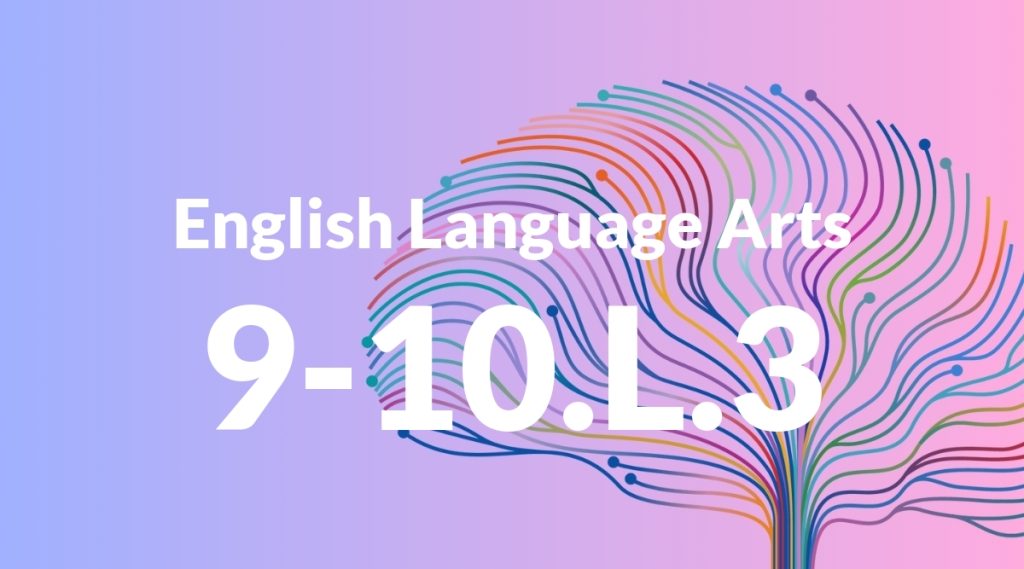Standard: 9-10.L.3 – Apply knowledge of language to understand how language functions in different contexts, to make effective choices for meaning or style, and to comprehend more fully when reading or listening.
Grade level: Grade 9-10
Subject: English Language Arts
Domain: Language
Teacher Overview
This standard emphasizes the importance of understanding how language functions in various contexts and making effective language choices. It is crucial for students to recognize the nuances of language to enhance their communication skills and comprehension abilities. Students should already be familiar with basic grammar, sentence structure, and vocabulary. They should also have experience with different genres of writing and basic reading comprehension strategies.
After mastering this standard, students will develop advanced skills in rhetorical analysis, nuanced writing techniques, and deeper comprehension of complex texts.
Common Misconception 1
A common misconception is that language use remains constant across all contexts. This is incorrect because language must be adapted to suit different audiences, purposes, and settings.
Intervention 1
To address this misconception, provide students with diverse examples of language use in different contexts and engage them in activities that require them to adapt their language accordingly.
Common Misconception 2
Another misconception is that word choice does not significantly impact meaning or style. This is incorrect as different word choices can drastically alter the tone, style, and meaning of a text.
Intervention 2
Conduct exercises that highlight how different word choices can alter the tone, style, and meaning of a text to address this misconception.
Prerequisite Knowledge
Students should have a foundational understanding of basic grammar, sentence structure, and vocabulary. They should also be familiar with different genres of writing and basic reading comprehension strategies.
Subsequent Knowledge
After mastering this standard, students will develop advanced skills in rhetorical analysis, nuanced writing techniques, and deeper comprehension of complex texts. They will be able to adapt their language use more effectively across various contexts.
Instructional Activities
- Analyze and discuss the language used in a political speech.
- Write a persuasive essay focusing on effective language choices.
- Interpret idiomatic expressions in a piece of literature.
- Role-play scenarios requiring formal and informal language use.
- Examine the word choices in advertisements and their impact.




